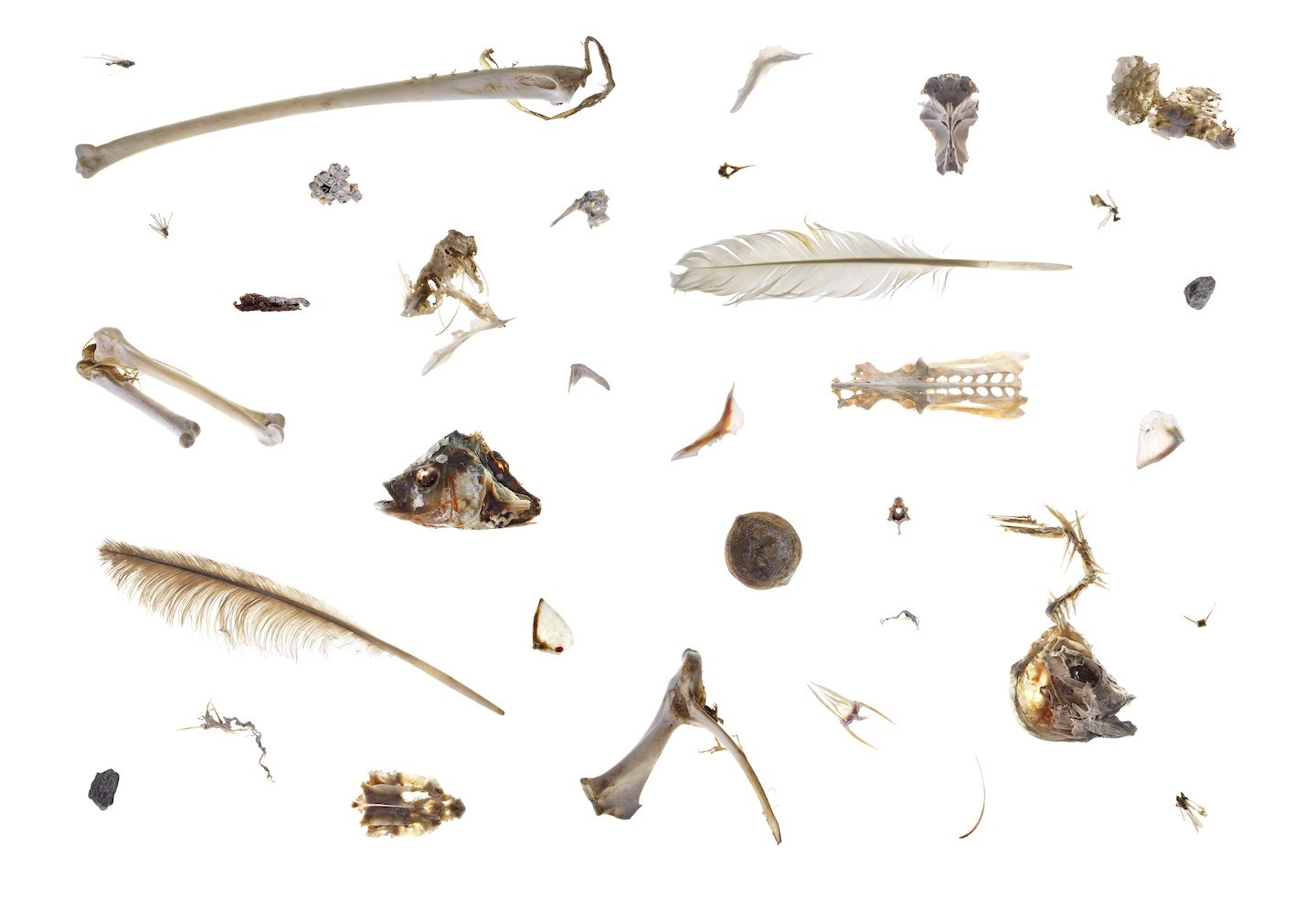Portfolio: Kim Stringfellow
Greetings from the Salton Sea (installation view), 2006, The John Michael Kohler Art Center, Sheboygan, WI
[Image description: An installation view of an exhibition featuring framed photographs on the wall, various objects laid out on two low pedestals, and a tv sitting on a pedestal in the background.]
Kim Stringfellow’s bodies of work are driven by her artistic research practice, the projects undertaken as a form of rigorous inquiry and discovery that encompass individual and collaborative research and storytelling. The result of her process is expressed through still photography, film, installations, books, and websites, taking form as a transmedia project that resists simplistic classifications. Her research methodology and artistic output entwine in a practice where it becomes increasingly difficult to align with conventions that dictate what comprises research and what comprises visual art.
Abandoned Trailer, Bombay Beach, CA from Greetings from the Salton Sea, 2000, digital C-print
[Image description: A rusted-out, abandoned bus sits partially submerged in a pond of red-orange water.]
Stringfellow views research as critical to her work, and considers it a responsibility, even a sort of implied obligation, to the site itself and to the viewer/observer/participant. Her first major work, Greetings From the Salton Sea, embodies such research, its outcome taking the form of still photography, an installation, and a printed book. The Salton Sea, California’s largest lake, was formed in 1905 due to a catastrophic engineering accident, when flooding from the Colorado River breached an irrigation canal and continued for two years. The resulting body of water was once a vacation hotspot. Due to a variety of issues, the water became increasingly saline and increasingly warm, leading to mass die-offs of bird and fish populations. Stringfellow’s photographs reveal a desolate, unforgiving landscape, littered with human detritus and the remains of fish and birds as well as other refuse. There is a harsh and compelling beauty in these works, along with a sense of loneliness and waste.
Leonard Knight (Caravan), Niland, CA from Greetings from the Salton Sea, 2000, digital C-print
[Image description: A person with light skin and gray hair, wearing a hat, sits in the open back of a trailer. They appear to have turned the trailer into an artwork, with a white, latticed structure and hand-painted decorations. On the right is a tree, its branches covered in red circles that read, “love,” “faith, “meekness,” “temperance,” “goodness,” “long-suffering,” “gentlest,” “peace,” and ”joy.”]
The nature of Stringfellow’s research for this project was both experiential and scientific. She spent significant time exploring the site and interacting with the remaining residents and visitors, as well as staff members at the Salton Sea Authority, the Sonny Bono Salton Sea National Wildlife Refuge, and the Imperial Irrigation District (and other institutions). Simultaneously seeking traces of human presence and compelling signals of human absence in the landscape surrounding the sea, Stringfellow placed herself in the environment she was documenting and formed a relationship with the landscape. This extended process of embodied and scholarly research makes itself manifest particularly in the text generated around the project, but also in the installations of objects, specimens, and photographs. The photographs themselves form a highly informed, carefully curated archive of the Salton Sea’s present state.
Salton Sea Shore Debris Collection from Greetings from the Salton Sea, 2000, digital C-print
[Image description: An array of bones, feathers, bugs, and fish heads spread out against a white background, photographed from above.]
There is a still a tendency to view research in terms of the constraints and practices that serve science, but artistic methodologies expand rigid conceptions of research. Research-based art practices such as Kim Stringfellow’s successfully challenge fundamental hierarchies between fields and disrupt assumptions about the role of art.
—Sarah Bricke, artist. Bricke was a participant in the 2022 HereIn Writers Workshop.
Dead Snow Goose, Sonny Bono wildlife Refuge, Salton Sea, CA from Greetings from the Salton Sea, 2000, digital C-print
[Image description: A white bird lays dead in a body of scummy water.]
Texaco Marine, North Shore, CA from Greetings from the Salton Sea, 2000, digital C-print
[Image description: A rusty sign that reads “Texaco Marine,” seen from behind, standing where a stretch of dirt meets a body of water.]
Tilapia Die-Off, North Shore, CA from Greetings from the Salton Sea, 2000, digital C-print
[Image description: A closeup of a mass of dead fish floating in water.]
Illegal Dump at Southeastern Shore of the Salton Sea, CA from Greetings from the Salton Sea, 2000, digital C-print
[Image description: A lakeshore lined with bare trees reaching up to the sky. In the ground, the dirt slithered with concrete piping and discarded rubber tires.]








